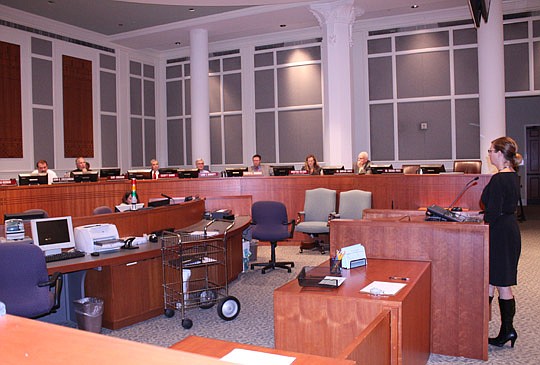
The City’s Waterways Commission was updated on the progress of the City’s Artificial Reef program Wednesday and learned of efforts to develop in-shore reefs.
Dana Morton, City Aquatic Biologist and Artificial Reef Coordinator, was joined by City Planner Jody McDaniel in presenting an update requested by the commission
City Waterways Coordinator Jim Suber also helps coordinate the program’s efforts.
“Artificial and natural reefs are public resources that provide recreation benefits and income to local economies,” said McDaniel.
“Fishing is a multibillion dollar industry in Florida and its estimated economic impact is $5.4 billion and 54,000 jobs associated with the fishing industry,” she said.
The Florida Fish and Wildlife Conservation Commission administers a state artificial reef program created by the Florida Legislature in 1982. The program provides financial and technical assistance to coastal local governments, nonprofit corporations and state universities to develop artificial reefs and to monitor and evaluate these reefs.
The program’s goals are to enhance private recreational and charter fishing opportunities and diving opportunities; provide a socioeconomic benefit to local coastal communities; increase reef fish habitat; reduce user conflicts; and facilitate reef-related research.
“Basically, this program runs on a shoestring budget. There are grants from Florida Fish and Wildlife. They are a 50-50 match and last year $800,000 was available statewide. We have volunteers who have put in hundreds of hours to help clean ships and find materials,” McDaniel said.
The program has a trust fund established with no donations to date.
The City has 21 permit sites for artificial reefs and it can deploy materials between April 15 and Nov. 15.
“The future of the program, for many of the fishermen, is the near-shore reefs, within three miles of shore,” said McDaniel.
“We are working with our volunteers to try to coordinate some locations where we can get permits. They are working closely with the shrimping industry to make sure we deploy in an area they are avoiding due to snagging,” she said.
There are no set coordinates for the project now, said McDaniel. The program also will consider building reefs in the St. Johns River.
Commissioner Eric Swann asked Morton if there were any other concerns with inshore reefs besides the shrimping industry.
“Clearance is going to be the main issue,” said Morton. “We have to have a 50-foot clearance in our existing permitted areas. When we come in shore, that will be discussed.”
Quinton White of Jacksonville University explained that recent successes with inshore reefs have increased discussions of creating the features throughout Florida.
“Other people have done it in other areas, which started this conversation,” said White.
Commissioner Scott Shine requested, and Commission Chairman Don Redman approved, that a Commission Artificial Reef Subcommittee be created to study the economic impact of the reefs.
White supported the idea and suggested more study be done on the impact of area waterways.
“We have a lack of economic impact information on waterways,” said White. “We don’t know what the St. Johns River is worth.”
356-2466